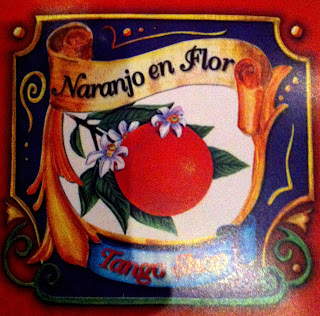 |
| Salon Canning milonga in Palermo |
 |
| Outdoor Sunday night milonga, Plaza Dorrego, San Telmo |
The options are simply overwhelming, which is great for the die-hards who try to circumnavigate the entire tango circuit, but what about the curious like us who just want to peek into their lives for a night or two? We decided to avoid going to a dinner show because we wanted to see how the regular porteños experience Argentine tango. We didn't want the glamorized version. After reading up on a few milongas, we decided to check out the outdoor milonga every Sunday evenings at Plaza Dorrego in San Telmo, which starts once the San Telmo Artisan Fair gets wrapped up. We also wanted to check out a more formal milonga, steeped in tradition and etiquette, so we headed to Salon Canning in Palermo.
Not having much knowledge or experience with tango (does "Dancing with the Stars" or "So You Think You Can Dance?" count? Ha, ha) or the etiquette at a milonga, we didn't know what to expect. We've read that some very traditional milongas have women and men sit on opposite sides. We've read that ladies should not make extended eye contact with the men, unless we intend to accept their invitation to dance. Boy, they would be VERY disappointed in my non-tango moves, for sure. Especially since a woman is suppose to dance with their partner for not just one song, but a set of 3-4 songs.
 |
| Plaza Dorrego, San Telmo |
 |
| Entrance to Salon Canning |
Milongas are run by different tango organizers and promoters. Apparently, some are better than others. Also, milongas can occur at the same physical location with different names, depending on who the organizer is. It's quite confusing. At Salon Canning, we heard that Mondays and Friday nights are the best, so we headed out about 11pm on Monday after dinner. They recommend reserving a table, but we did not. We showed up, paid our 30 pesos admission each (~US$6), and a guy with a bushy Crusty-the-Clown hair asked us if we had reservations (in which we answered no), and he showed us to a two-top on the second row, which had very good views of the dance floor. A lady walking around was taking drink orders so we shared a beer. Here's a pop question: how can you tell a casual observer from a tango dancer? Answer: None of the porteños participating in the dancing were drinking any alcoholic beverages. Usually just water.
As the night went on, more and more people started to show up. Most women showed up in their street clothes but went to change into a sexy, tango-friendly attire and proper stiletto shoes with leather soles. We hardly saw any actual couples show up. Everyone seemed to be single or came in groups.
Most people changed dance partners after a set, and observed various propositions from a sly eye contact to a more obvious, "would you like to dance with me?" invitation. The couples would wait a few bars into the song before they started dancing, probably to get a true feel for the music.
We could not figure out Argentine tango. The movements are very sultry, sexy, and elegant, but no real pattern to any of the moves. The man is truly in control (Mike thinks learning Argentine tango would be good for me!). It was commonplace to see the women with their eyes closed, close to their partners, feeling (but not seeing) the movements they were being led into. We noticed that tango has a way of making anyone look sexy, big or small, thin or not. It's all in the moves!
We read that indeed, Argentine tango is very different from ballroom tango. According to Beginner's Guide to Argentine Tango, "[It] is an improvisational dance based on the four building blocks of walking, turning, stopping and embellishments. The dance is like a puzzle that gets put together differently each time. Women and men bring their own styles and embellishments to the dance which contribute significantly to the excitement and unpredictability of the experience. Even though dancers follow certain conventions, they never quite know how someone will construct a dance, add an embellishment or interpret the music."
On both nights, we bowed out of the festivities quite early for Buenos Aires standards, but thoroughly enjoyed being part of this very Argentine experience. Next time, we may be brave enough to take a few lessons and get ourselves on the dance floor. Ha!
 |
| Tango shop logo in Argentine traditional art style called filete. Orange is the color for tango. |



